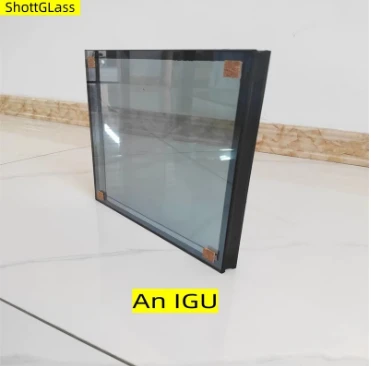Dec . 07, 2024 15:49 Back to list
Leading Manufacturers of Float Glass and Their Innovative Production Techniques
Float Glass Manufacturers An Overview
Float glass, a high-quality glass product created through the float process initially developed in the 1950s, is widely used for a variety of architectural and automotive applications. The method involves melting raw materials, which then float on molten tin to form a perfectly flat glass surface. This innovative technique has revolutionized glass production, allowing manufacturers to produce large sheets of glass that are clear, uniform, and free from distortions. As a result, float glass has become a staple in the construction and automotive industries.
The Float Glass Manufacturing Process
The float glass manufacturing process begins with the careful selection of raw materials, which typically include silica sand, soda ash, and limestone. After these materials are mixed and heated to about 1,700°C (3,092°F) in a furnace, they melt into a viscous liquid. This molten glass is then poured onto a bed of molten tin, where it spreads out and floats, creating a flat surface.
Once the glass has cooled and solidified, it is cut into sheets of various sizes, depending on the specific needs of the market. It can further undergo various treatments such as annealing, which relieves internal stress, or coating for energy efficiency and aesthetics. This entire process requires precision to ensure that the final product meets the quality standards desired by consumers.
Key Players in the Float Glass Industry
The float glass market is highly competitive, with several reputable manufacturers leading the industry. Companies such as Saint-Gobain, Guardian Industries, and Pilkington dominate the global landscape. These manufacturers are recognized for their high-quality products, innovative technologies, and commitment to sustainability. They have invested in research and development to create energy-efficient glass solutions, which have gained popularity due to increasing environmental awareness.
Saint-Gobain, based in France, is one of the largest float glass manufacturers in the world, producing a diverse range of glass products for construction, automotive, and other applications. Guardian Industries, headquartered in the United States, is another key player known for its advanced glass technologies and sustainability initiatives. Pilkington, part of the NSG Group, is notable for its development of high-performance glass, including low-emissivity (Low-E) glass that reflects heat and minimizes energy loss.
Innovations and Trends in the Industry
float glass manufacturers

Innovation is a constant in the float glass manufacturing sector. Companies are increasingly focusing on the development of smart glass technologies that can change properties in response to environmental conditions. This includes electrochromic glass, which can change its tint based on electrical signals, providing energy savings through reduced cooling and heating needs.
Additionally, the demand for energy-efficient buildings has driven the popularity of Low-E glass, which provides thermal insulation while allowing natural light to enter. This trend aligns with global efforts to reduce carbon footprints and promote sustainability in construction practices.
In terms of production techniques, manufacturers are also exploring automated technologies and Industry 4.0 concepts to enhance efficiency and reduce production costs. The adoption of robotics and AI in the manufacturing process helps streamline operations and improve quality control.
Challenges Faced by Float Glass Manufacturers
Despite the advancements and growth in the float glass industry, manufacturers face several challenges. Fluctuations in the prices of raw materials, such as sand and soda ash, can impact production costs significantly. Furthermore, environmental regulations regarding emissions and waste management require manufacturers to adapt their processes and invest in cleaner technologies, often leading to increased operational costs.
There is also stiff competition from alternative materials such as plastics and composites, particularly in the automotive sector. Manufacturers must continually innovate to maintain their market position and meet evolving consumer preferences.
Conclusion
Float glass manufacturers play a crucial role in various sectors, providing essential materials that enhance the functionality and aesthetics of buildings and vehicles. As the industry adapts to technological advancements and sustainability demands, the future of float glass looks promising, with potential for continued growth and innovation. These manufacturers will need to stay ahead of market trends and challenges to maintain their competitive edge in this dynamic field. With ongoing investments in research and development and a commitment to sustainable practices, the float glass industry is poised for a bright future.
-
Safety and Style with Premium Laminated Glass Solutions
NewsJun.24,2025
-
Reinvents Security with Premium Wired Glass
NewsJun.24,2025
-
Premium Float Glass Line for Modern Architecture
NewsJun.24,2025
-
Low Emissivity Glass for Energy-Efficient Architecture
NewsJun.24,2025
-
High-Performance Insulated Glass Solutions for Modern Architecture
NewsJun.24,2025
-
Elevates Interior Style with Premium Silver Mirror
NewsJun.24,2025
Related PRODUCTS














